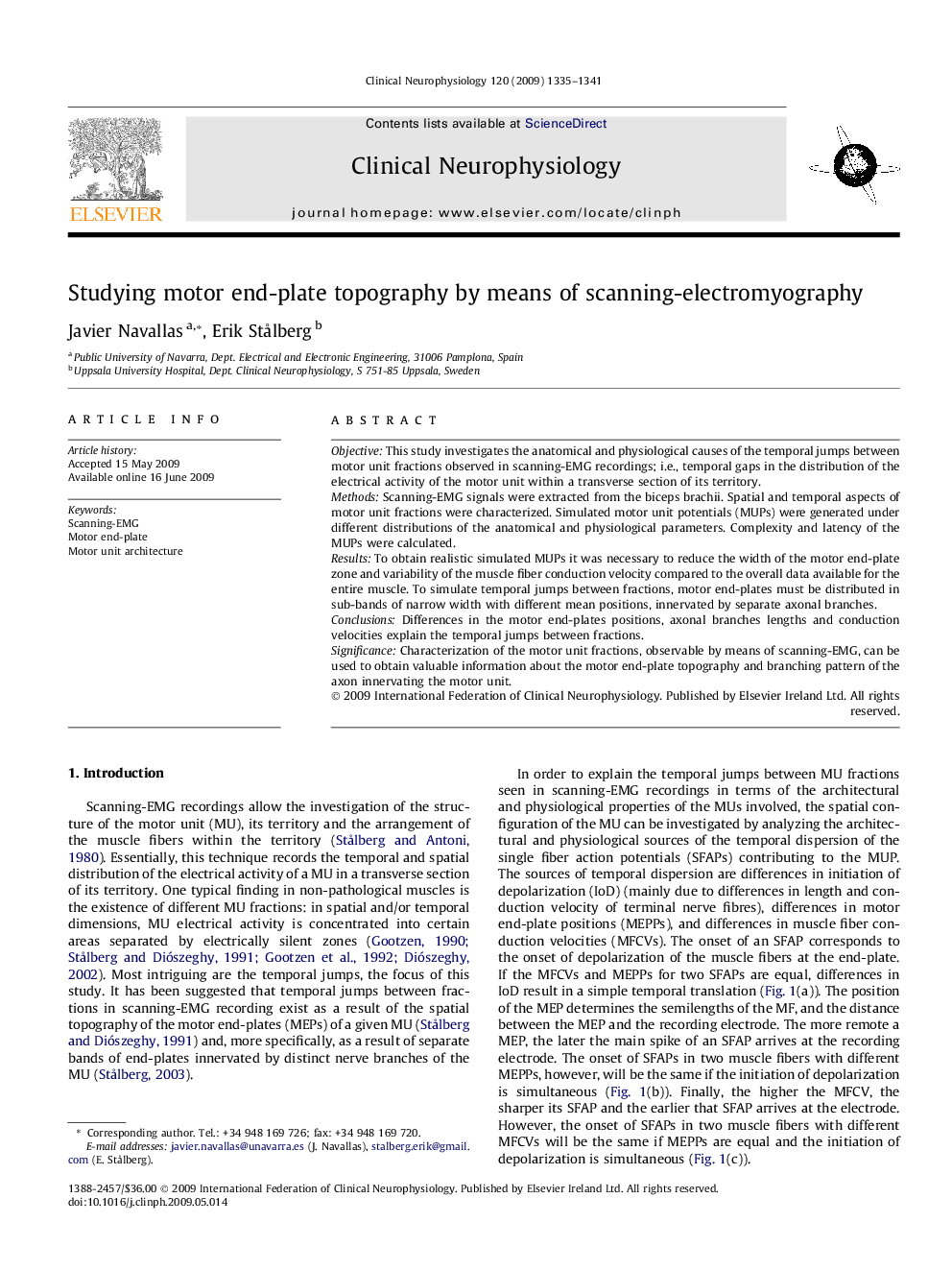| Article ID | Journal | Published Year | Pages | File Type |
|---|---|---|---|---|
| 3046566 | Clinical Neurophysiology | 2009 | 7 Pages |
ObjectiveThis study investigates the anatomical and physiological causes of the temporal jumps between motor unit fractions observed in scanning-EMG recordings; i.e., temporal gaps in the distribution of the electrical activity of the motor unit within a transverse section of its territory.MethodsScanning-EMG signals were extracted from the biceps brachii. Spatial and temporal aspects of motor unit fractions were characterized. Simulated motor unit potentials (MUPs) were generated under different distributions of the anatomical and physiological parameters. Complexity and latency of the MUPs were calculated.ResultsTo obtain realistic simulated MUPs it was necessary to reduce the width of the motor end-plate zone and variability of the muscle fiber conduction velocity compared to the overall data available for the entire muscle. To simulate temporal jumps between fractions, motor end-plates must be distributed in sub-bands of narrow width with different mean positions, innervated by separate axonal branches.ConclusionsDifferences in the motor end-plates positions, axonal branches lengths and conduction velocities explain the temporal jumps between fractions.SignificanceCharacterization of the motor unit fractions, observable by means of scanning-EMG, can be used to obtain valuable information about the motor end-plate topography and branching pattern of the axon innervating the motor unit.
